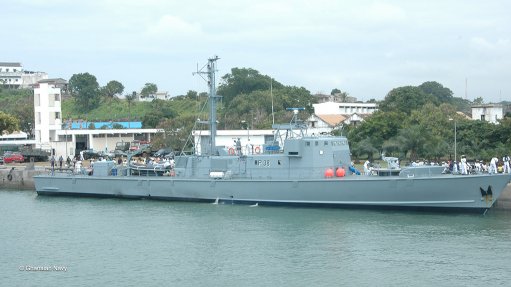Identifying safeguards for BES systems
To curb climate change, power utilities have to adapt swiftly to clean technology alternatives across the electricity supply value chain. Battery Energy Storage Systems (BESS) are one such technology, that could be managed as a generation asset or a demand-side intervention at the distribution level. Owing to the nascent nature of utility-scale BESS, especially at scale, knowledge regarding the process safety/fire risk to operators and how to manage it is posing a challenge.
Proconics recently completed a quantitative risk assessment (QRA) for a utility scale LiFePO4 BESS facility to identify the necessary safeguards and establish baseline risk levels, from where to reduce the likelihood of undesired events to As Low As Reasonably Practicable (ALARP). To assess the fire risk, Computational Fluid Dynamics analyses were utilised to perform modelling considering factors such as leak source location, fluid properties, nature of the release (e.g. high pressure), topography, air movement (wind speed and direction), ambient temperature and obstructions (equipment, buildings, and structures, etc.). The explosion risk was assessed in specialised software (by Viper Applied Sciences), considering fluid properties, detonation location, proximity and location of infrastructure, and their structural strength. Both the likelihood and consequence of events are considered. Over the life of the facility, a risk-based approach achieves significant cost savings avoiding over-capitalisation, reducing unnecessary operational expenditure and, most importantly, preventing life-threatening incidents.
By convening a multi-disciplinary team, fault trees were developed to determine the most likely event scenarios, which included fire and explosion events. The stability of a lithium-ion cell is primarily dependent on temperature. The temperature of the cell is determined based on the heat generation/dissipation rates. If the heat cannot be dissipated linearly at an equivalent rate of generation, then the internal chemical reactions become stimulated by the increasing temperature and induce the cells into thermal runaway. Ultimately, all failure modes within lithium-ion batteries, such as thermal/control, electrical or mechanical failure, or a combination of them, generate heat and stimulate further thermally driven chemical reactions within the cell until it reaches an ultimate failure point known as a thermal runaway – resulting in fire or explosion. NFPA 855 specifically requires that a hazard analysis considers the consequences of thermal runaway conditions in a single module, cluster/rack, and string. For this reason, cooling failure (temperature control) was given special consideration, specifically given the likelihood of power outages at the facilities due to the reduced reliability of the national power grid for the specific sites.
Three credible worst-case scenarios were identified and evaluated; an explosion and two fire scenarios:
- Explosion - multiple cells go into thermal runaway resulting in gas accumulation, with ignition once the mixture reaches its lower flammability limit.
- Fire Scenario 1 - multiple cells go into thermal runaway resulting in gas accumulation, with immediate ignition once flammable gas exits the container through passive openings resulting in a fire.
- Fire Scenario 2 - In case of an explosion, the BESS container will incur damages, increasing the natural ventilation. If batteries continue to produce off gas (thermal runaway continues), flashover, leading to a fully developed fire, can occur.
For the fire scenarios associated with the BESS containers, the heat radiation exceeded 37 kW/m2 in some cases. Heat radiation at that intensity is sufficient to cause damage to equipment and is considered the normal threshold for 100%
fatality (outside). Pressures exceeding 0.35 barg were achieved in explosion modelling, and are sufficient to cause structural damage (also the normal threshold for 100% fatalities outside).
Considering the frequency of exceedance of all the scenarios, as well as the site occupancy and probability of fatality based on the consequence, the site risk was assessed and deemed intolerable. To mitigate the risk to personnel safety (to ALARP), additional measures were adopted, including gas detection, fire suppression, and pressure relief (emergency venting).
The mitigation strategy adopted for the BESS containers entails both preventative and mitigation measures, such as active gas suppression, which will activate if either heat or smoke is detected. Before activating the suppression system, gas detectors, measuring H2, will prompt the activation of an emergency exhaust ventilation system, to prevent the accumulation of flammable gas. Additionally, the closed-loop heating and ventilation air conditioning system will shut down. The ventilation and exhaust system consists of electric ventilation louvres and explosion-proof exhaust fans, which will close if the gas concentration drops below the threshold value.
With the rapid rollout of BESS across the globe, Proconics believe that QRAs must become the norm for informing the design of protection/mitigation systems, especially for large-scale installations.
Comments
Press Office
Announcements
What's On
Subscribe to improve your user experience...
Option 1 (equivalent of R125 a month):
Receive a weekly copy of Creamer Media's Engineering News & Mining Weekly magazine
(print copy for those in South Africa and e-magazine for those outside of South Africa)
Receive daily email newsletters
Access to full search results
Access archive of magazine back copies
Access to Projects in Progress
Access to ONE Research Report of your choice in PDF format
Option 2 (equivalent of R375 a month):
All benefits from Option 1
PLUS
Access to Creamer Media's Research Channel Africa for ALL Research Reports, in PDF format, on various industrial and mining sectors
including Electricity; Water; Energy Transition; Hydrogen; Roads, Rail and Ports; Coal; Gold; Platinum; Battery Metals; etc.
Already a subscriber?
Forgotten your password?
Receive weekly copy of Creamer Media's Engineering News & Mining Weekly magazine (print copy for those in South Africa and e-magazine for those outside of South Africa)
➕
Recieve daily email newsletters
➕
Access to full search results
➕
Access archive of magazine back copies
➕
Access to Projects in Progress
➕
Access to ONE Research Report of your choice in PDF format
RESEARCH CHANNEL AFRICA
R4500 (equivalent of R375 a month)
SUBSCRIBEAll benefits from Option 1
➕
Access to Creamer Media's Research Channel Africa for ALL Research Reports on various industrial and mining sectors, in PDF format, including on:
Electricity
➕
Water
➕
Energy Transition
➕
Hydrogen
➕
Roads, Rail and Ports
➕
Coal
➕
Gold
➕
Platinum
➕
Battery Metals
➕
etc.
Receive all benefits from Option 1 or Option 2 delivered to numerous people at your company
➕
Multiple User names and Passwords for simultaneous log-ins
➕
Intranet integration access to all in your organisation





















